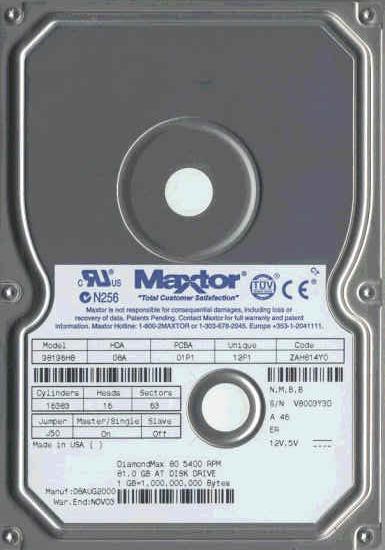|
|
![]() |
| Home Page | Core Components | Storage Devices | Cards | Connectors | Peripherals |
| Optional Peripherals & Common PC Specs
| Computer Glossary | Order More Books
|

Hard Drive, CD Media &
Floppy Drive
The Hard Drive for Permanent
Storage

Hard drives are encased in somewhat support
metal mounts
A hard drive is a device for storing all of
the permanent information (data) you save or that other programs save.
A programs is a set of instructions created
by a programmer to be used by the rest of us. Programs are stored on CDs and
floppies then copied or setup or installed onto your hard drive.
The most common data stored on the hard drive
is the operating system like Windows or Unix, programs and files like document files
that you create, pictures, movies, music and sounds.
The hard drive also stores the information
files, also known as drivers, that allow other components and devices in your computer to
work with each other
- Hard drives can be internal or external, EIDE or SCSI
(see PC Glossary)
- A hard drive is measured in size (20GB, 10GB, 2.1GB) and
speed/RPM (3200, 5400, 7200).
- A 20GB EIDE hard drive is common today. Large hard drives
allow for the storage of large amounts of data.
- The faster the hard drive, the more important it is to
install a hard drive cooler onto the hard drive.
- A hard drive connects to the motherboard’s onboard
connector, usually, via a 40-pin cable ribbon (see Connectors).
- The hard drive gets its power from the molex connector on the
power supply.
- All storage devices connect to both the motherboard via a
cable ribbon and to the power supply using one of the power supply connectors.
Portable, Removable Storage
Removable storage consists of floppy diskettes, ZIP disks,
tapes, CDs and the storage devices that support them.
- Removable storage devices make data and information portable.
You may copy data from a hard drive to a storage device for back up purposes or copy data
to another hard drive to share vital information with others
- These devices can also store operating systems, programs,
applications, files and folders that contain files for temporary or permanent installation
onto the hard drive
ZIP Drives
- The ZIP drive has almost replaced the tape drive as a back up
storage device

- ZIP drives can store 100 or even 250MB of data, as opposed to
the floppy’s 1.44MB.
- Although ZIP drives are still being used, they are being
rapidly replaced by the CD-Read/Write drives also known as CD burners.
CD Media
- CD-Media consists of CD-ROM, CD-RW (rewrite), and DVD drives.

- CD-Media is standard equipment on PCs
- Sometimes treated like a hard drive (HDD) because it uses the
same ribbon cable as the HDD.
- Like all components that uses a ribbon cable, it connects to
the motherboard's onboard controller (see Connectors).
- In addition to an onboard connection, all EIDE storage
devices require a molex power supply connector.
- CD-ROMs and HDD have a high degree of interconnectivity, as
you will learn
- CD-RW drives have replaced ZIP drives as a back up unit.
- When purchasing CD-media, a combo drive is preferred,
DVD/CD-RW.
- A CD-RW drive (like 4X4X32 and above) is preferred over a
plain-ole CD-ROM drive. 4X write, 4X rewrite and 32X read speeds is the preferred
minimum standard for a CD-RW drive.
- Like hard drives, ZIP and CD drives use a motherboard’s
40-pin, EIDE onboard controller connection and the ribbon cable (see
Connectors).
The Floppy Drive
- The good ‘ole 1.44MB, 3.5” floppy drive and its
indispensable, highly
 portable, high density (and/or double sided)
diskette is a must-have. portable, high density (and/or double sided)
diskette is a must-have.
- Floppy drives connect to the motherboard via her 34-pin
onboard connector, a 34-pin ribbon, and the mini connector on the power supply.
- The very ancient, 5-1/4” floppy drive is now a
collector’s item; however, they are still in use on some PCs
|
Understanding PC Hardware, Second Edition, ©2003
Cary Muhammad, (All Rights Reserved), vipcomputers4u@yahoo.com |
